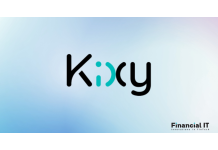PNC Bank Launches PNC Mobile Accept®, a New Pay-As-You...
- 12.06.2025 12:30 pm
Bonprix and Trustly to Launch New Partnership –...
- 12.06.2025 11:30 am
inDrive Launches First Fully Embedded Pix Payment...
- 12.06.2025 10:45 am
ANNA Money Taps Episode Six to expand SME Business...
- 11.06.2025 09:25 am
TerraPay and Whalet Unite to Elevate Cross-Border...
- 11.06.2025 09:15 am
Selfbook Chooses PayPal as Commerce Partner
- 11.06.2025 09:15 am
Blackhawk Network Brings More Secure, Contactless...
- 11.06.2025 02:40 am
BofA Clients Embrace New $10 Million Limit in U.S....
- 10.06.2025 03:35 pm
KIXY & British Wrestling Partner for Successful...
- 10.06.2025 02:45 pm
Down Hall Hotel & Spa Selects DNA Payments to...
- 10.06.2025 02:15 pm
Deutsche Bank and Ant International Announce Strategic...
- 10.06.2025 12:15 pm
Conferma Expands Virtual Card Capabilities Across...
- 10.06.2025 10:04 am






















